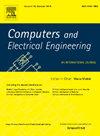基于进化计算的风能综合多目标最优无功调度和经济负荷调度问题
IF 4.9
3区 计算机科学
Q1 COMPUTER SCIENCE, HARDWARE & ARCHITECTURE
引用次数: 0
摘要
该研究探讨了输电网的功率损耗和电压波动,并将其与经济负荷调度问题(ELD)相结合,创建了一个新的多目标优化框架,旨在最大限度地减少这些问题,同时降低发电成本。多目标函数结合了三个目标:最小化与eld相关的发电成本、功率损耗和与最佳无功调度(ORPD)相关的总电压偏差(TVD)。该框架还包括可再生能源(RES)的最佳定位,以评估其对系统的影响以及多目标(MO)-ELD-ORPD问题的具体目标。考虑风能的可变性,利用威布尔分布函数(WPDF)确定最优风电输出。采用JAYA算法对ieee30总线系统进行了分析,采用基于模糊的Pareto最优方法确定了最优解。此外,本文还研究了较大的IEEE 118总线系统的一个特殊情况,使用基于印度斯利那加的现实RES模型,考虑了光伏(PV)和风源的不确定功率贡献。JAYA算法成功地为MO-ELD-ORPD提供了最佳解决方案,与其他评估算法相比,显著降低了发电成本、功率损耗和TVD。在IEEE 30总线系统中,利用高估的风力发电导致发电成本、功率损耗和TVD分别下降约4.97%、23.7%和31.38%。此外,在IEEE 118总线系统中加入光伏和风能,与没有RES的情况相比,显著改善了所提出的案例研究结果,从而验证了该方法的有效性。本文章由计算机程序翻译,如有差异,请以英文原文为准。
Evolutionary computation based wind energy integrated multi-objective optimal reactive power dispatch and economic load dispatch problem
The study explores power loss and voltage fluctuations in transmission networks, integrating them with the economic load dispatch problem (ELD) to create a new multi-objective optimization framework, aiming to minimize these issues while reducing generation costs. The multi-objective function combines three goals: minimizing ELD-related generation costs, power loss, and total voltage deviation (TVD) associated with optimal reactive power dispatch (ORPD). The framework also includes a renewable energy source (RES) optimally positioned to assess its impact on the system and the specific objectives of the multi-objective (MO)-ELD-ORPD problem. The variability of wind energy is considered, with optimal wind power output determined using the Weibull distribution function (WPDF). The analysis is conducted for the IEEE 30 bus system using the JAYA algorithm, while a fuzzy-based Pareto optimality method identifies the best solutions. Additionally, a special case for the larger IEEE 118 bus system is examined, accounting for uncertain power contributions from photovoltaic (PV) and wind sources, using a realistic RES model based on Srinagar, India. The JAYA algorithm has successfully provided optimal solutions for the MO-ELD-ORPD, resulting in significant reductions in generation costs, power losses, and TVD compared to other evaluated algorithms. Utilizing overestimated wind power led to decreases of approximately 4.97 %, 23.7 %, and 31.38 % in generation costs, power losses, and TVD, respectively, in the IEEE 30 bus system. Additionally, incorporating PV and wind energy in the IEEE 118 bus system significantly improved the proposed case study results compared to scenarios without RES, thus validating the effectiveness of this method.
求助全文
通过发布文献求助,成功后即可免费获取论文全文。
去求助
来源期刊

Computers & Electrical Engineering
工程技术-工程:电子与电气
CiteScore
9.20
自引率
7.00%
发文量
661
审稿时长
47 days
期刊介绍:
The impact of computers has nowhere been more revolutionary than in electrical engineering. The design, analysis, and operation of electrical and electronic systems are now dominated by computers, a transformation that has been motivated by the natural ease of interface between computers and electrical systems, and the promise of spectacular improvements in speed and efficiency.
Published since 1973, Computers & Electrical Engineering provides rapid publication of topical research into the integration of computer technology and computational techniques with electrical and electronic systems. The journal publishes papers featuring novel implementations of computers and computational techniques in areas like signal and image processing, high-performance computing, parallel processing, and communications. Special attention will be paid to papers describing innovative architectures, algorithms, and software tools.
 求助内容:
求助内容: 应助结果提醒方式:
应助结果提醒方式:


